Stainless-Steel, “The Charisma of the Cookware world” is the most common type of cookware material in any household. The range of utensils in any given kitchen speaks volumes about the elaborateness of the cooking that takes place there as well as the type of food prepared. For any kitchen, a cookware that can take rough handling, is dishwasher safe, remains scratch and chip free, and is elegantly designed is a must. That’s why in India, stainless steel,’ The Crown of Durability’ holds the heart of the kitchen.
- Why is Stainless Steel Cookware reliable?
- Why should one buy only good quality nickel free steel?
- What to look for when buying stainless steel cookware?
- FAQS
1. Why is Stainless Steel Cookware reliable?
Souvenir of the early twentieth century, “Stainless Steel” is an alloy of metals including steel, carbon, nickel, and chromium. It stands by its name ‘stainless’ which means almost no staining and rusting. It’s highly durable, rust-resistant, cost-effective, non-reactive to food, scratch resistant and low-maintenance. With so many great aspects, it’s the unmatchable king of maximum share of cookware in a kitchen. However, despite all the goodness, it does come with some downfalls. It’s not a good conductor of heat compared to metals like aluminium and copper and can cause food to burn due to uneven heat distribution. But don’t worry this problem has been alleviated by the encapsulated base technology.
2. Why should one buy only good quality nickel free steel?
A bit on the higher side, it does not come at a bargain. But always remember it is the combination in the alloy of metals that decides if your cookware is food grade or not. We must understand that being inexpensive also means the market can offer you stainless steel cookware of qualities ranging from great to good to worse. If we use low-quality and cheap stainless-steel cookware, then prolonged use can lead to dents and grooves in the cookware where deposition of dirt can occur. These are difficult to remove by and might ultimately contaminate food. Sometimes cooking wet sauces, especially tomato, citrus or acid-based ones will cause nickel to seep into your food, if it’s not food-grade.
However, technological advancements have revolutionised stainless steel in the 21st century. Top brands like MEYER and CIRCULON use the best quality of nickel free stainless steel to offer you the best of cookware. You have high-quality nickel free stainless-steel cookware from brands like Meyer and Circulon. Meyer Select which range from Rs.2000 to Rs.6000 (approximately. At the same time, you have stainless-steel cookware which costs nothing in the pocket but tends to crack after using for a month because of the low–quality material used. Laced with heaps of nickel to make them look shiny; they fail to match even the basic standards of health. It might feel, the price pinches the pocket but it’s the price we pay for good-quality food-grade stainless-steel cookware that will bestow us with no-nickel food and great health.
Its great qualities easily outweigh the shortcomings. Now, imagine the freedom of being able to cook anything (Totally Non-Reactive) and amazing sturdiness that helps to prevent the hot spots. The power to be forged into any shape and size; from woks, kadhai, stir-fry, fry pan, saucepan to simply anything and everything. And the ambidexterity that allows you to find cookware for every occasion. That’s the competence that stainless steel will equip you and your kitchen with.
3. What to look for when buying stainless steel cookware?
1. Stainless steel grade
Traditionally a good quality steel cookware is made from 304 and it is quite popular in the Indian market. Nowadays, people are gradually moving towards nickel free owing to the health benefits. You should look for brands who claim and mention such details in writing. Thankfully Meyer offers nickel free range to the customers, and they have been a pioneer in doing so with all the successful ranges.
2. Choose the right weight
When it comes to the thickness of the base or the sides, the ‘correct' thickness should be the key. A good quality stainless steel pot will have a certain 'weight' that you can sense when you pick it up.A heavier pot could mean it was made with more material, which means it cost the manufacturer more to make it, but it could also mean that the weight comes from other materials like aluminium which is cheaper than steel. Manufactures use aluminium to spread heat through encapsulated bases. This usually means that the pot will be more expensive for you to buy. However, the quality of steel decides the strength and the entire cookware may not always be as heavy as what you get from an ordinary manufacturer. Idea is to be able to lift the pan without worrying about weight and optimum utilisation of metal, so you don't get a bulky pan or a kadhai that you don’t want to use on a regular basis.
3. Overall construction.
Stainless steel is an inefficient heat conductor. Stainless steel cookware's performance is mostly determined on how effectively the pan spreads heat and avoids hot spots. This is influenced by the copper or aluminium core's thickness. Therefore, you should always look for a cookware with an aluminium or copper core or cladding since it will give you the durability of stainless steel while also providing superior heat conduction. The core is the disc at the bottom or encapsulated base of the pan. The cladding is a complete layer that goes on the base and sides which is commonly known as "Triply". Keep in mind that clad cookware could be pricier than cookware with only a metal core.
Here are the options within your reach from Meyer:
Encapsulated bottom with Aluminium Core
1) Meyer Select
Triply "Clad" Range
2) Circulon Steel Shield "C" Series, steel and non-stick
Meyer Nickel Free Stainless Steel Cookware Range
4. FAQs on cleaning stainless steel
1) How to remove burnt food from the pan?
It's not as difficult as it sounds to remove burned or firmly stuck food. First, fill the pan with warm water, add a little baking soda and vinegar. Allow it to sit for 15 minutes before attempting to loosen the food particles with a spoon. If that doesn't work, bring the water to a boil, and then scrape out the stuck food. Wash thoroughly later with soap.
2) How to remove whitish chalky spots?
Use one part vinegar to three parts of water in the cookware. Bring to a boil then allow to cool. Wash thoroughly later with soap.
3) How to remove colour discoloration?
Overheating is usually the cause of this discoloration. Avoiding overheating (of course) is one way to avoid this, but if it happens, cook something tomato-based in the pot or pan. You can also boil a solution of water and vinegar in the pan.
4) Can you remove the pitting?
When you add salt in water before it boils, a reaction causes damage to the chromium oxide layer on the surface of the stainless steel, pitting can occur on stainless steel cookware. Unfortunately, you won't be able to remove existing pitting. Just be careful and add salt when water has come to a boil.

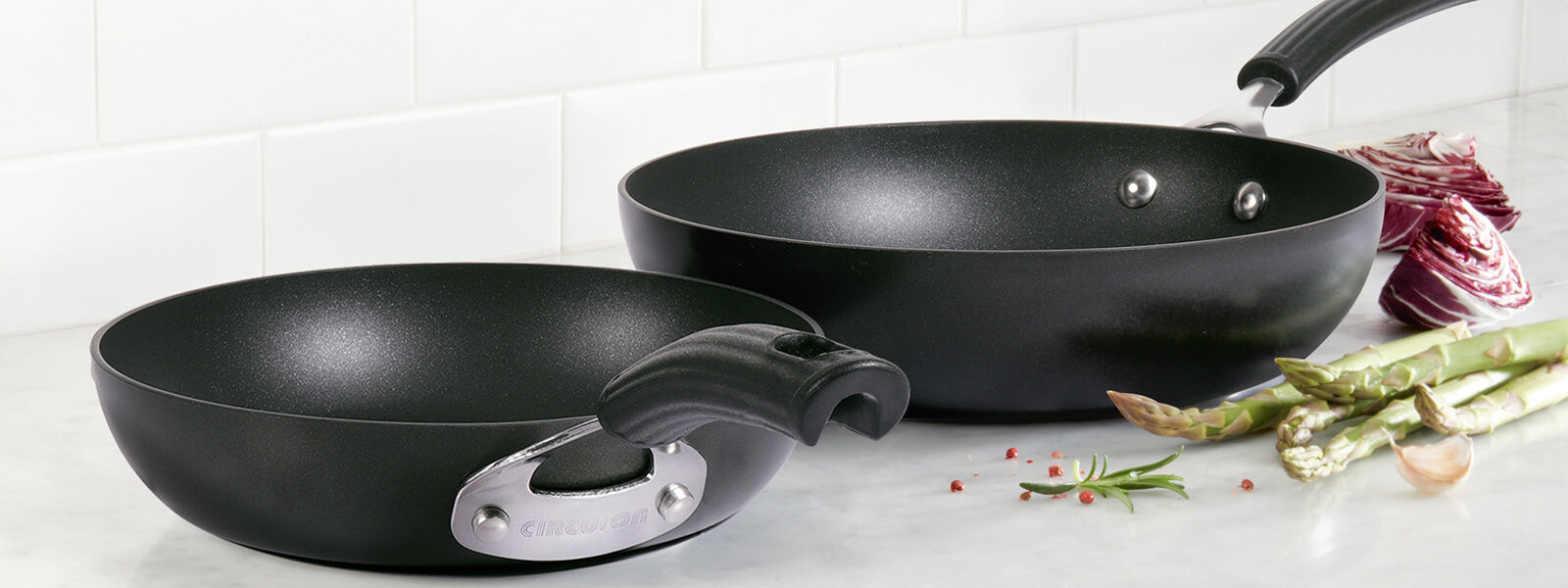
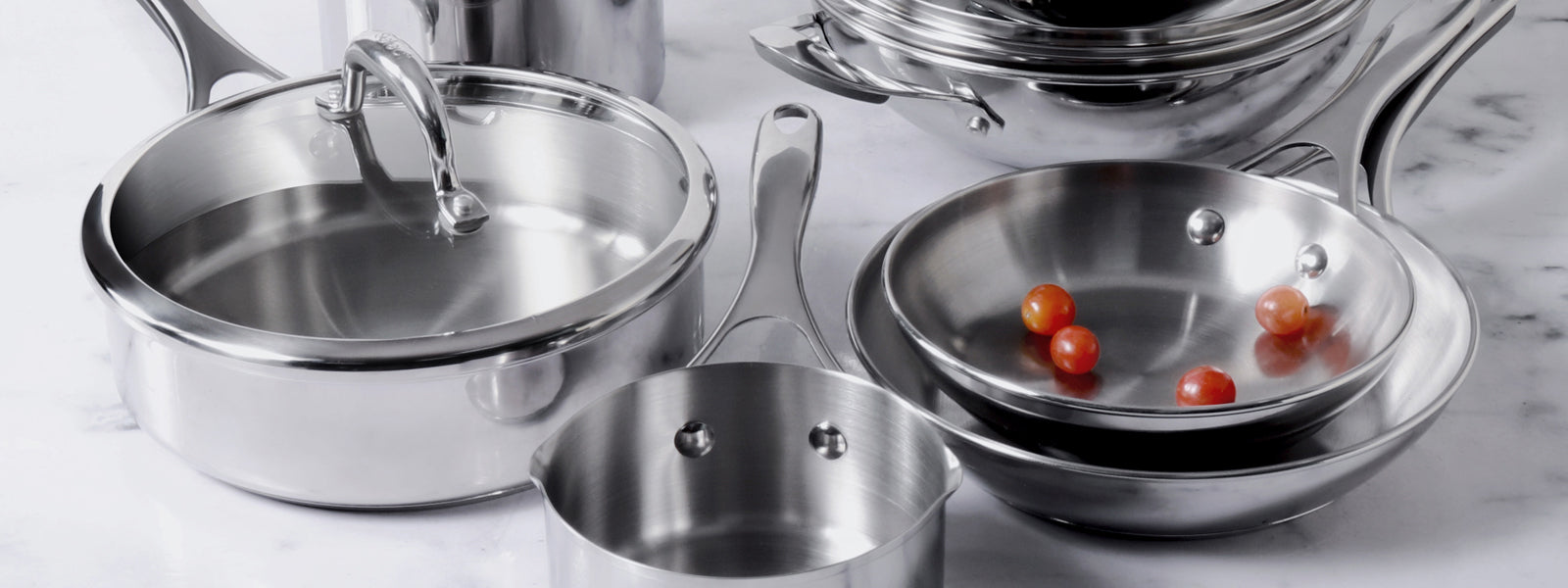
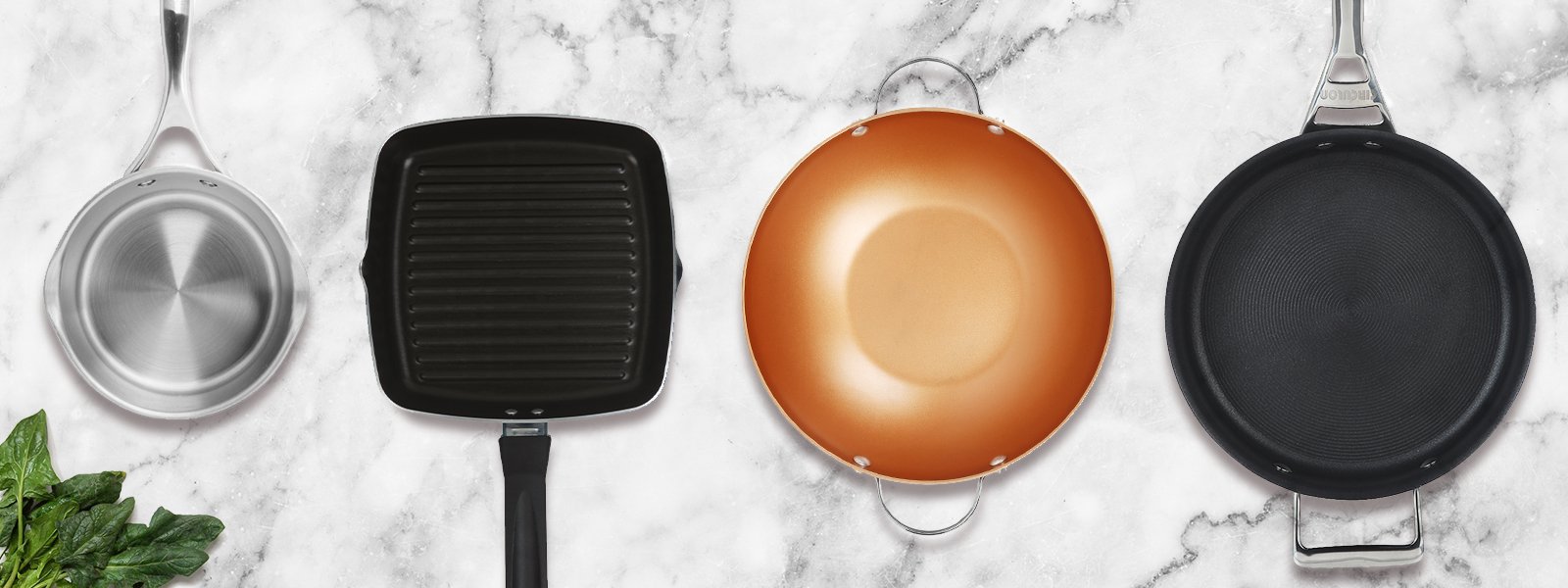
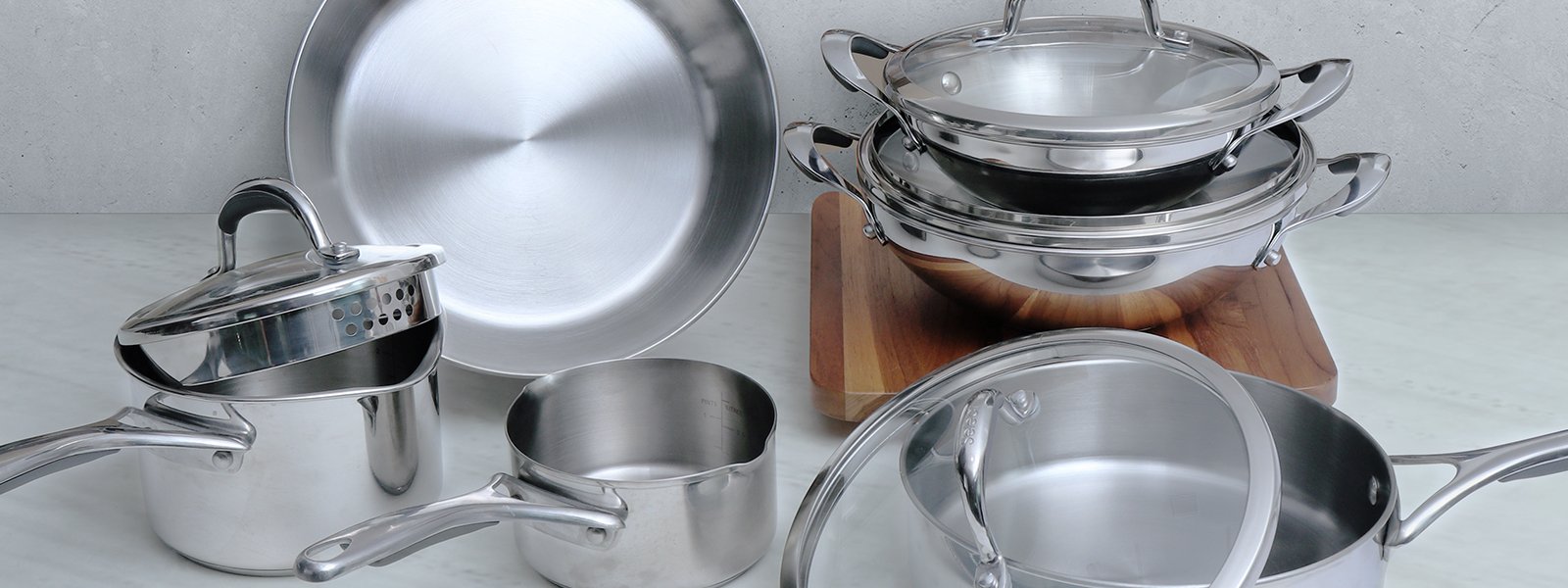
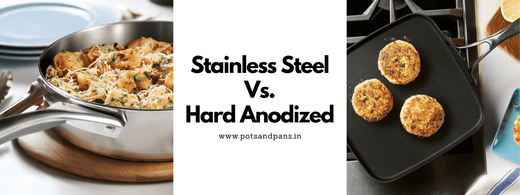
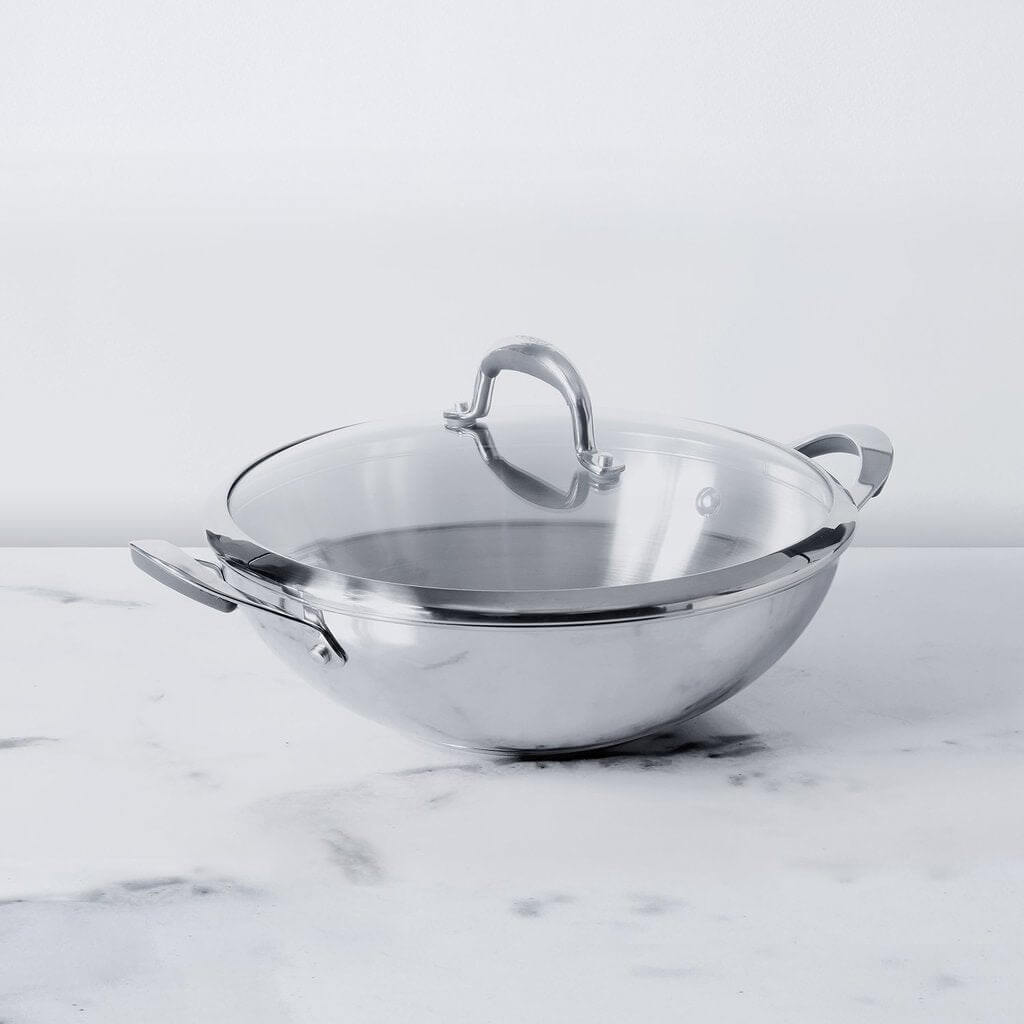
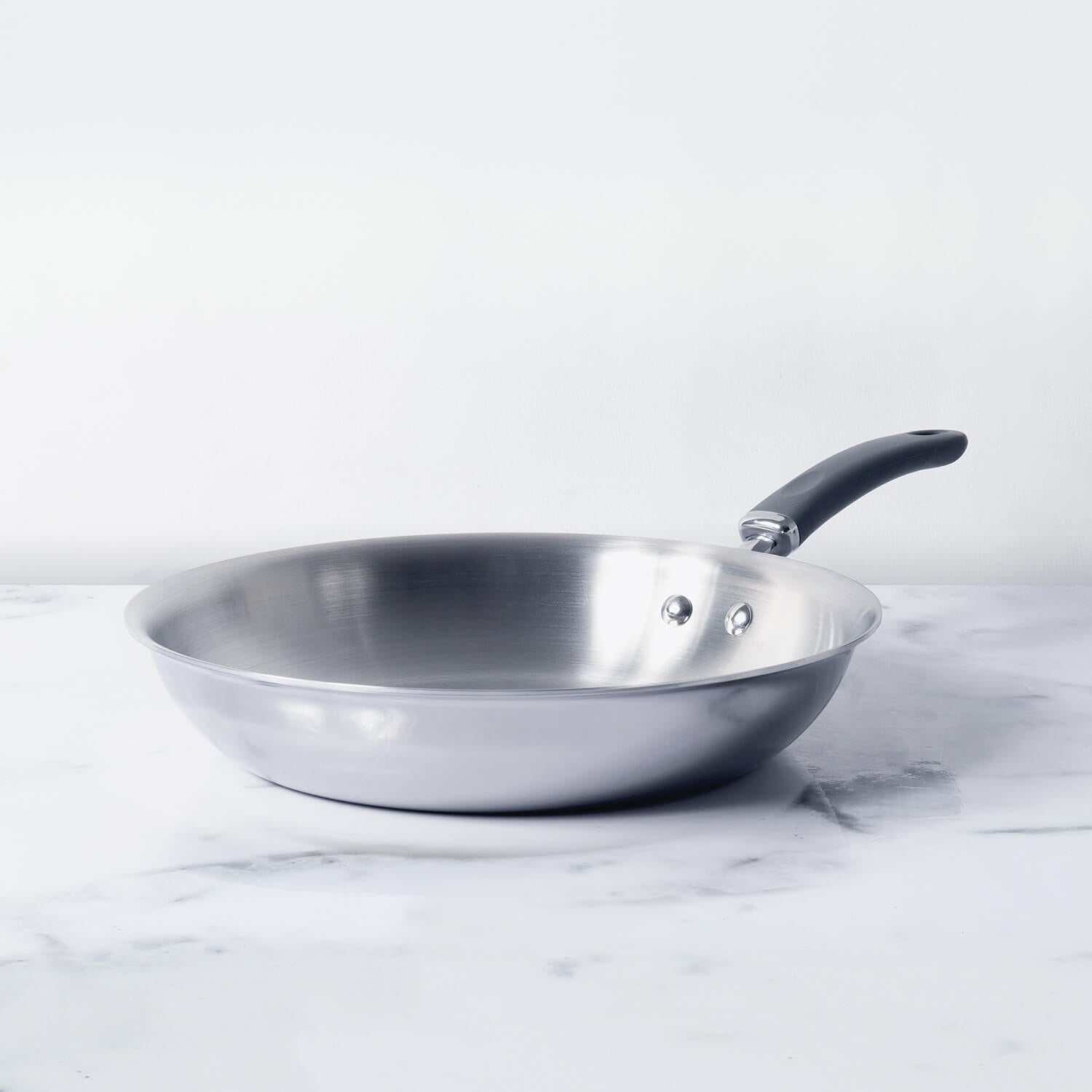




i completely agree. its a great material for cookware. mine has been servicing me for years now. it doesnt break or dent much. you just toinvest in some good quality stuff. it will stay then.
I have a staineless steel pan and Its been with me for 5 years now. Its really good. good info here
Leave a comment